




Lilies are beautiful flowers that can brighten up any room, but they can also leave behind stubborn stains if their pollen gets on your clothes. Lily pollen is known for its bright yellow color and sticky texture, making it difficult to remove. However, with the right techniques and a little patience, you can successfully remove lily pollen stains from your clothes.
First, it’s important to act quickly when you notice a lily pollen stain on your clothing. The longer the stain sits, the more difficult it will be to remove. Use a tissue or a clean cloth to carefully blot the stain, being careful not to spread it further. Avoid rubbing the stain, as this can make it worse.
If the stain is dry, gently scrape off any excess pollen using a spoon or a butter knife. Be careful not to push the stain further into the fabric. Once you’ve removed as much of the pollen as possible, it’s time to treat the stain.
One method to remove lily pollen stains is to mix a solution of mild dish soap and warm water. Dab the solution onto the stain using a clean cloth, and gently work it into the fabric. Rinse the area with cool water to remove any soap residue, and check if the stain has been lifted. If the stain is still visible, repeat the process until it is completely gone.
Another option to remove lily pollen stains is to use rubbing alcohol or hydrogen peroxide. These solutions can help break down the stain and lift it from the fabric. Apply a small amount of the solution onto a clean cloth and blot the stain, working from the outer edges toward the center. Rinse the area with cool water and check if the stain has been removed. If not, repeat the process until the stain is no longer visible.
Remember to always check the care label on your clothing before attempting to remove any stains, as some fabrics may be more delicate and require special care. With these tips and tricks, you can confidently remove lily pollen stains from your clothes and keep them looking fresh and stain-free.
Tips for Removing Lily Pollen Stains from Clothes
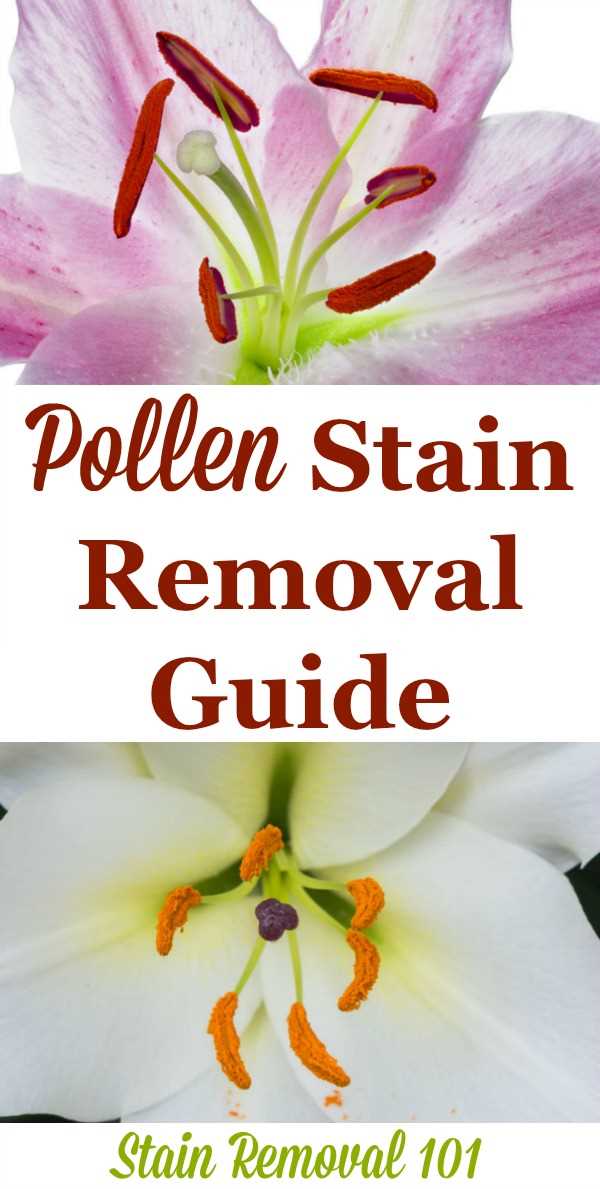
Dealing with lily pollen stains on clothes can be frustrating, but with the right techniques and products, you can successfully remove them. Here are some tips to help you get rid of these stubborn stains:
1. Act quickly
As soon as you notice the lily pollen stain, it’s important to take immediate action. The longer the stain sits on the fabric, the harder it will be to remove.
2. Do not rub the stain
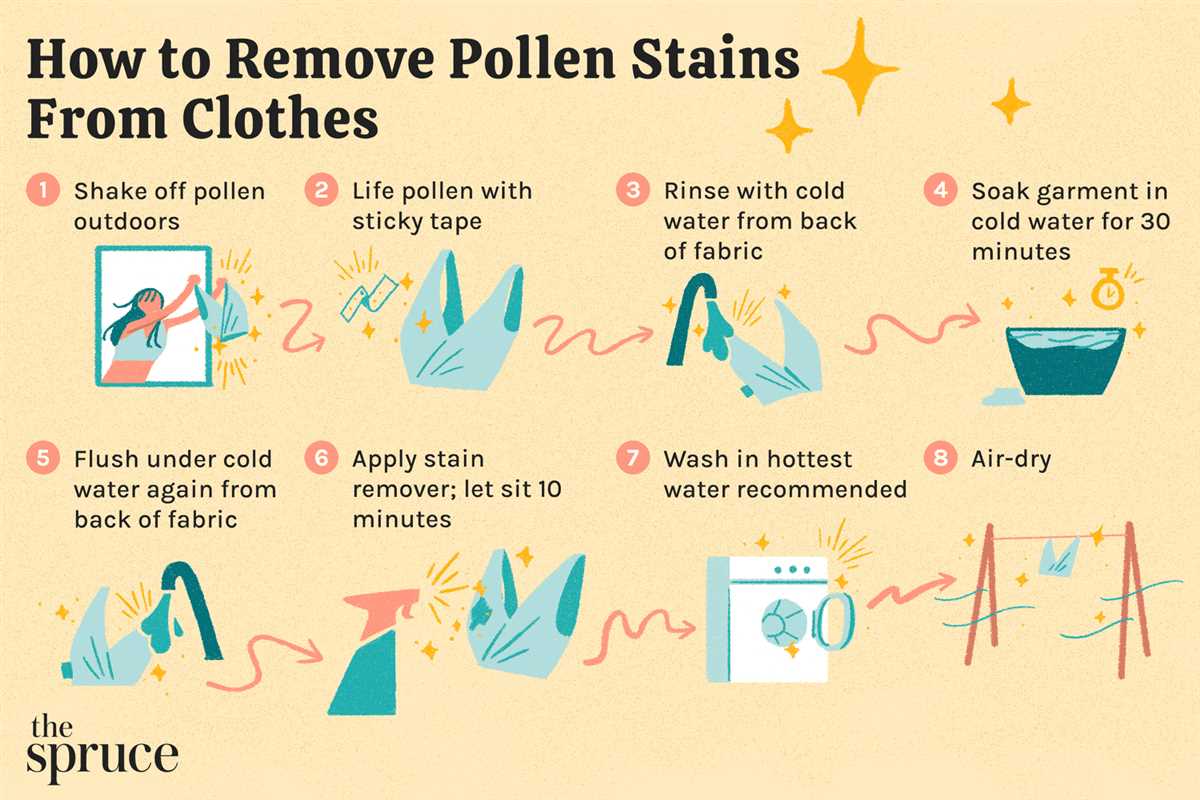
While it may be tempting to rub the stain to remove it, this can actually make it worse. Rubbing may spread the pollen and push it deeper into the fabric fibers.
3. Gently shake or brush off the excess pollen

Before you start treating the stain, try gently shaking or brushing off any excess pollen. Be careful not to spread it further or rub it into the fabric.
4. Use sticky tape or a lint roller
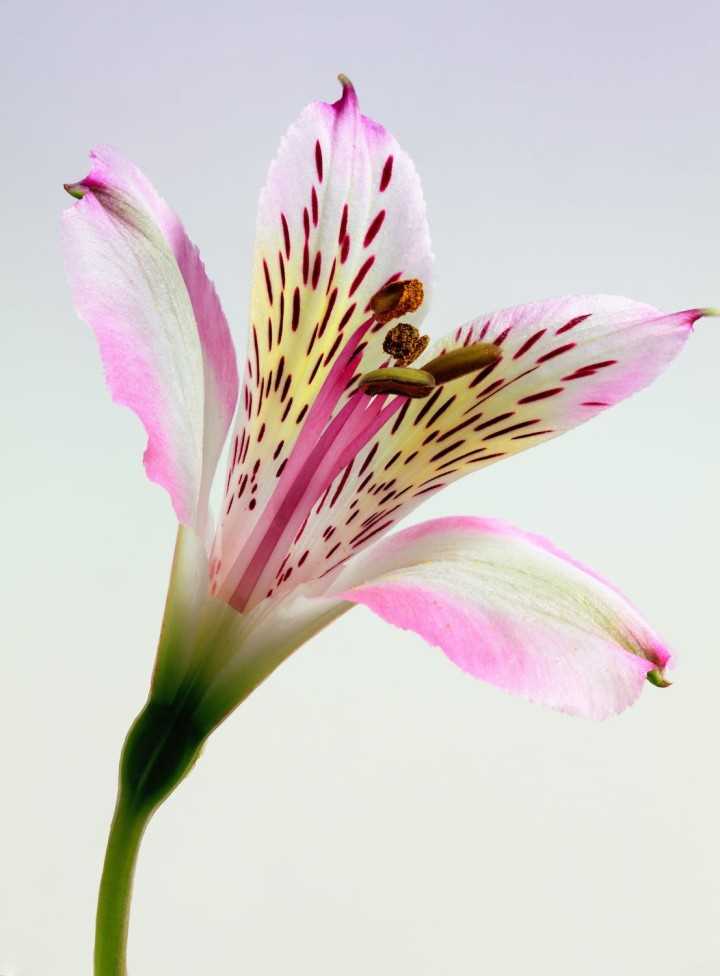
If there are still pollen particles on the fabric after shaking or brushing, you can use sticky tape or a lint roller to lift them off. Press the tape or roller onto the stain and peel it away to remove the pollen.
5. Treat the stain with cold water

After removing as much pollen as possible, rinse the stained area with cold water. The cold temperature helps to prevent the stain from setting into the fabric.
6. Pre-treat the stain with stain remover

If the stain persists, apply a stain remover to the affected area. Follow the instructions on the stain remover product for best results. Alternatively, you can use a mixture of water and mild detergent to pre-treat the stain.
7. Wash the garment
After pre-treating the stain, wash the garment as usual. Use the washing machine’s recommended settings for the specific fabric type. Check the garment after washing to ensure the stain is completely gone before drying.
8. Avoid heat
When drying the garment, avoid using heat. High temperatures can cause the stain to set permanently. Instead, air dry the garment or use the lowest heat setting on your dryer.
By following these tips, you can effectively remove lily pollen stains from your clothes, allowing you to enjoy your beautiful lilies without worrying about stains.
Immediate action is key
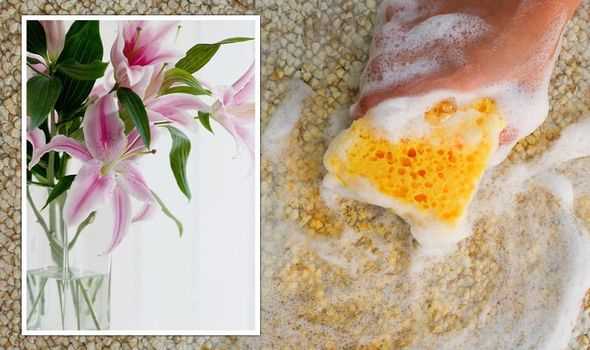
When you accidentally stain your clothes with lily pollen, it’s important to take immediate action to prevent the stain from setting. The longer the stain sits on the fabric, the harder it will be to remove. Here are some steps you can follow to quickly tackle lily pollen stains:
-
Do not rub the stain: Rubbing the stain will only further push the pollen deeper into the fabric and make it more difficult to remove. Instead, gently brush off any excess pollen using a dry cloth or a soft-bristled brush.
-
Blot the stain: To remove any residual pollen that may have stuck to the fabric, carefully blot the stain with a clean white cloth or paper towel. Pat the cloth onto the stain without rubbing it in.
-
Pre-treat the stain: Pre-treating the stain with a stain remover or liquid laundry detergent can help break down the pollen and make it easier to remove. Apply a small amount of the stain remover directly onto the stain and let it sit for a few minutes.
-
Wash the garment: Once you have pre-treated the stain, wash the garment following the care instructions on the clothing label. Use a gentle laundry detergent and wash the garment in cold water. Check the stain before drying the garment, as heat can set the stain.
If the stain persists after washing, repeat the pre-treatment and washing process until the stain is completely gone. It’s important not to put the garment in the dryer until the stain is fully removed, as heat can make the stain set and become even more difficult to remove.
Do not rub the stain

If you accidentally get lily pollen on your clothes, it is important not to rub the stain. Rubbing the stain can cause the pollen to spread and further embed itself into the fabric fibers.
Instead, gently remove any excess pollen by using a clean, dry cloth or a piece of sticky tape. You can also use the edge of a credit card or a spoon to carefully scrape off any visible pollen particles.
Once you have removed the excess pollen, it is best to treat the stain as soon as possible. Acting quickly can prevent the stain from setting and becoming more difficult to remove.
Shake off excess pollen
When you first notice pollen on your clothes, the first step is to carefully shake off any excess pollen. This will help to prevent the pollen from spreading further and causing more stains.
Brush the stain
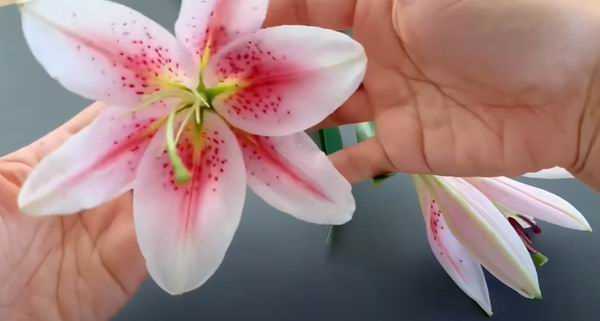
Before attempting any stain removal method, it’s important to gently brush off any excess pollen from the surface of the clothes. Use a clean, soft-bristled brush or a lint roller to carefully remove as much pollen as possible without rubbing it into the fabric.
Use a stain remover and launder

If the lily pollen stain is still visible after you’ve done the initial steps, you can try using a stain remover and laundering the garment. Keep in mind that it’s always a good idea to check the care label on your clothing to ensure you use the appropriate stain remover and washing method.
Here are the steps to use a stain remover and launder the stained clothing:
- Apply a stain remover directly to the stained area. You can use a pre-wash stain remover, a laundry detergent specially formulated for stains, or a homemade stain remover solution.
- Gently rub the stain remover into the fabric using a clean cloth or sponge. Be careful not to scrub too hard, as this can damage the fabric.
- Let the stain remover sit on the fabric for the recommended amount of time. This will give it a chance to break down the stain.
- After the recommended time has passed, launder the garment as you normally would. Make sure to follow the instructions on the garment’s care label for water temperature and cycle settings.
- Check the stained area after laundering. If the stain is still visible, repeat the process or try using a different stain remover.
It’s important to note that some stains may be more stubborn and require multiple treatments. Patience and persistence are key when it comes to removing stains. If the stain persists, you may need to consider seeking professional help or taking the garment to a dry cleaner.
| Stain Remover | Description |
|---|---|
| Pre-wash stain remover | A product specifically designed to remove stains before laundering. |
| Laundry detergent | Some laundry detergents have stain-fighting properties that can help remove tough stains. |
| Homemade stain remover solution | A mixture of common household ingredients, such as dish soap, hydrogen peroxide, and baking soda, that can be used to treat stains. |
FAQ
What is the best way to remove lily pollen stains from clothes?
The best way to remove lily pollen stains from clothes is to first gently brush off any excess pollen. Then, soak the stained area in cold water and gently rub the fabric together. You can also use a stain remover or laundry detergent to pretreat the stain before washing it in the machine.
Can lily pollen stains be removed from clothes?
Yes, lily pollen stains can be removed from clothes. It is important to act quickly and not let the stain set. By following the right steps and using the right products, such as stain removers and laundry detergent, you can effectively remove lily pollen stains from clothes.
What should I do if I get lily pollen stains on my clothes?
If you get lily pollen stains on your clothes, the first thing you should do is avoid rubbing or smearing the stain further. Gently brush off any excess pollen and then soak the stained area in cold water. Use a stain remover or laundry detergent to pretreat the stain before washing it in the machine.
Are there any household items that can help remove lily pollen stains from clothes?
Yes, there are some household items that can help remove lily pollen stains from clothes. One option is to use rubbing alcohol or hydrogen peroxide to pretreat the stain. Another option is to use a paste made of baking soda and water to gently scrub the stain before washing it.
Is it possible to remove lily pollen stains from delicate fabrics?
Yes, it is possible to remove lily pollen stains from delicate fabrics. However, you need to be extra careful when treating delicate fabrics. Avoid rubbing or smearing the stain and opt for gentle cleaning methods, such as soaking the stained area in cold water and using a mild stain remover or detergent. If in doubt, it is always best to consult a professional cleaner.














